 |
||
| War hero Dwight D. Eisenhower becomes University president, Ruth Bader Ginsburg and Madeleine Albright become alumnae and the events of 1968 expose rifts between the University, neighbors, and students. | ||



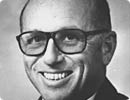 |
1946 Joseph Engelberger, the father of modern robotics, graduates from SEAS. |
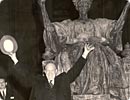 |
1948 The Oral History Research Office is founded by Pulitzer Prize–winning historian Allan Nevins, marking the start of the modern oral-history movement. Today the collection houses nearly 8,000 taped memoirs with more than one million pages of transcripts. |
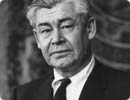 |
1949 |
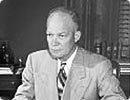 |
1952 |
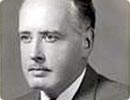 |
1953 |
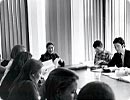 |
1959 |
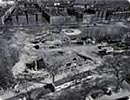 |
1960 |
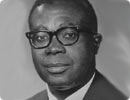 |
1963 |
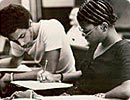 |
1964 Columbians participate in voter-registration drives throughout the South. Many return to campus determined to participate in civil-rights protest activities and neighborhood organizing in New York. |
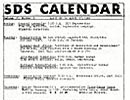 |
1965 Opposition to American military involvement in South Vietnam leads to the creation of several antiwar groups on campus. A Columbia chapter of Students for a Democratic Society (SDS) is organized; its early activities focus on building opposition to the war in Vietnam. |
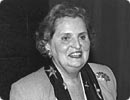 |
1966 Madeleine Albright, later U.S. secretary of state, graduates from the School of International and Public Affairs. |
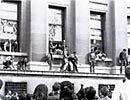 |
1968 At a meeting of the Joint Faculties the afternoon following the police bust, the Executive Committee of the Faculty is created to try to restore the torn fabric of the University. Law professor Michael I. Sovern is made co-chairman, along with political scientist Allan Westin. At the committee's urging, the gym project is abandoned, University links to military defense agencies and NROTC are terminated, and criminal charges against arrested students are dropped. An outside fact-finding commission, chaired by Harvard law professor Archibald Cox, is invited on campus to investigate the causes of the disturbances. Four months later, President Kirk announces his retirement. Andrew W. Cordier, then dean of the School of International Affairs and a seasoned U.N. diplomat, is named acting president. |
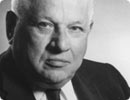 |
1969 The University Senate, a representative assembly of faculty, students, and administrators, is voted into existence by a University-wide referendum. It assumes the responsibilities of the Executive Committee of the Faculty, which ends its work. |